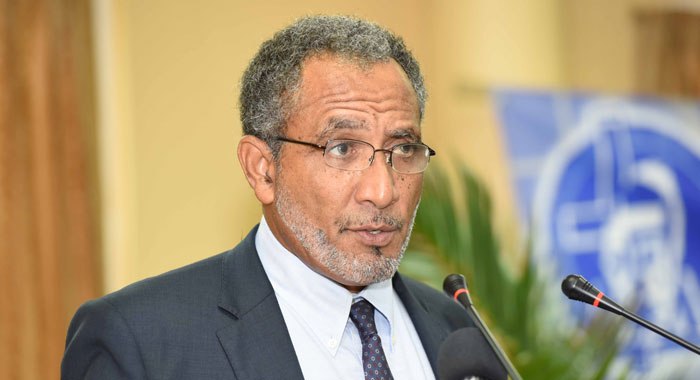
(Excerpts of Dr. the Honourable Godwin Friday’s 2023 Budget Presentation)
The National Insurance Service (NIS) is a subject matter that is on people’s lips and quite rightly so because it affects their well-being. It’s been in the news and we know because of statements that were made recently by the Executive Director, Mr. Haynes, and some government ministers and people are aware of the importance of the NIS.
Madam Speaker, what is suggested is, that if reforms were not made before 2024, draconian measures have to be taken. By Draconian, he meant that contribution rates, he said may have to go up from 10 to 20%, and that you may have other measures in place as well. So, this is why there’s this continuing discussion now about what to do with the NIS. The question you have to ask yourself is how did the NIS get to this point to where such draconian measures may be part of the conversation? How? And, what is the state of the NIS reserves?
The minister said in his presentation that the NIS had to draw down on its reserves to maintain payments of benefits. Now ideally, I’m told that this is something that you don’t want to do. It’s there for that purpose if necessary. But, what you want to have in place is that you have contributions and investment income that help to carry the program going forward.
Then of course your administration costs have to be kept in check to make sure that it doesn’t exceed what is considered to be reasonable in the circumstances and sustainable by the institution. So, what is the state of the reserves of the NIS?
Prudentially, 10 to 15 years of reserves, that is to say, 10 times what it would take to maintain the program for a year that you would have that going forward as reserves for the institution or 12 times, 15 times. And, that is considered to be a prudent yardstick to use. If you have 12 years of reserve, then the possibility is there that you might be able to pay some incremental increase to policyholders. Otherwise, if you are having to dip into reserves, then obviously that scenario does not apply.
So, the question is how did we get there? I had a look at the investment portfolio. As I saw in the estimates, for example, there are several loans. Loans that are from the National Insurance Service to government for three and a half percent and 4% of interest rate. Is that a sort of return that the board of management should be expecting when they lend? If you had to borrow from a financial institution here, you’d be looking at 8% minimum, eight and a half percent depending on the type of activity you are in, or 12%.
So, those are some of the concerns, Madam Speaker. Already NIS has a social responsibility component to its mandate, but that can’t simply be done to the point where it undermines the integrity of the system. That is something that you have to maintain. Make sure the balance is there. Where are we now and how did we get there? That’s the question that the board will have to answer.
I see that the consultations are going to continue, that’s what the minister said. And, they’re going to have consultations with policyholders. Well, these are some of the questions policyholders need to ask. How did we get there? What are the types of investments we’ve made, why were they made?
Why did the NIS, for example, when the government did not pay over its contributions to the NIS, and owed the NIS, I think $22 million or thereabout, that instead of paying cash, they swapped the JU-C building for debt? Why is it that, that debt that was held by National Properties, land was transferred to National Properties, which was then swapped to the NIS for debt instead of paying back the cash, which they could then invest for their own purpose at a better return, possibly, or at least they can determine how that is? How do these arrangements affect the liquidity and the earning potential of the NIS and ultimately its reserves because that is what is going to affect the quality of service that it provides to the people of this country.
We know that there are a number of options that have been outlined, but one of them took my interest.
On page 60 of the minister’s statement, when he discussed the National Insurance Service, he said that there are several options that were being considered and one was to introduce mandatory coverage for self-employed workers. So, you’re spreading the pool broader. Of course, there’s a question of how do you actually collect, but to have mandatory coverage, I mean, a lot of self-employed people I know who want to have coverage, but they just haven’t taken the effort to do it.
And, the NIS itself has not taken its show on the road to try to enroll people; fisher folk and vendors, people who work on the cruise ships, who work on the oil rigs. I met a gentleman a few days ago, he works on a boat in the Northern Caribbean that is registered on a Vincentian flag, but he doesn’t have any NIS coverage, so he’s thinking of becoming self-registered. I don’t know if that person was on a Vincentian registered boat, if that would qualify him for mandatory NIS, but he has to go and get that for himself. But, the NIS does not take its show on the road. You can’t just sit back and wait for legislation. You got to go in the market, and encourage people to sign up.





